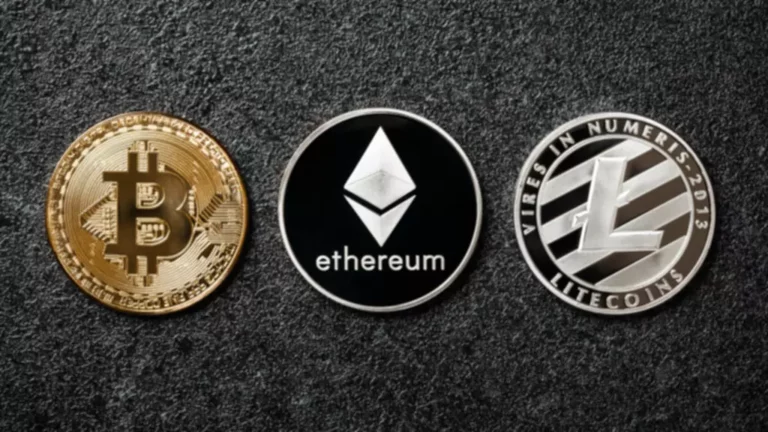Content
A crypto exchange wallet is a type of Yield Farming digital wallet provided by crypto exchanges. These wallets allow users to store, receive, and send crypto assets directly within the exchange’s ecosystem. They are a part of the service portfolio designed for users who trade on the exchange platform. A crypto exchange has more typically the order book format and allows the trading of popular cryptocurrencies like Bitcoin or Litecoin. A crypto wallet is used as a currency wallet to access secure storage for cryptocurrencies.
Exploring Cryptocurrency Exchanges
By leveraging https://www.xcritical.com/ the strengths of both platforms, users can effectively manage their digital assets and navigate the evolving landscape of cryptocurrency with confidence and ease. Cryptocurrency exchanges function as digital marketplaces where users can trade cryptocurrencies. As the saying goes in the crypto world, “Not your keys, not your coins.” This dependency on the exchange means your funds are vulnerable to hacks, mismanagement, or even regulatory seizures.
So, what’s the deal with cold wallets?
Crypto exchanges facilitate financial difference between crypto wallet and exchange services beyond mere trading, including loans, insurance, and converting digital currency to fiat (and vice versa). Crypto transactions facilitated by exchanges offer speed and liquidity, making them essential for dynamic trading. Initiating the transfer from the exchange requires selecting the desired cryptocurrency and specifying the recipient’s wallet address.
Best practices for managing crypto wallets
- Though users can control the amount they are willing to pay as network fees to the miners, this directly influences the speed of the exchange.
- Paper wallets, though less common, offer another way to store private keys offline via a physical medium, such as a QR code printed on paper.
- Private keys, akin to long-form passwords backed by cryptography, grant access to one’s cryptocurrency holdings, while public addresses serve as an easily shareable destination for receiving funds.
- In the dynamic world of crypto, wallets act as personalized digital safes, guarding your assets with unique private keys.
Cryptocurrency is full of financial possibilities, where one dollar has the potential to grow into thousands of dollars (or disappear in an instant!). The exchange is the custodian of your Bitcoin, in the same way that the bank is the custodian of your Fiat money. Some wallets are designed to not just store but also interact with Decentralized Finance (DeFi) protocols, allowing lending, borrowing, or staking.

Keeping crypto on exchange: risks
Exchanges offer easy trading, but they hold onto your private key when you use them. This has led to problems in the past, like significant security breaches. Always double-check your wallet address before sending or receiving crypto to avoid misdirected funds. Also, your wallet address is a public identifier for receiving funds, ensuring privacy while allowing transactions. Centralized exchanges, such as Binance or Coinbase, operate as intermediaries, matching buyers and sellers while holding custody of users’ funds. Exchanges are indispensable for crypto trading, enabling fast transactions, real-time crypto prices, and access to various crypto currencies.
Exchanges provide access to high liquidity, making it easy to buy and sell assets quickly. This is crucial for traders monitoring crypto news and looking to capitalize on market opportunities. If you’re engaged in frequent crypto trading, keeping funds on an exchange simplifies the process. Exchanges offer advanced trading tools, instant transactions, and real-time tracking of crypto prices.
Alternatively, you could choose to put your assets in a self-custodial (often referred to as a non-custodial) wallet, which is one that you manage and control yourself. In the case of a self-custodial wallet, you maintain an exclusive private key that allows you to access your wallet. In a custodial wallet, this key is held by the exchange that manages your wallet. A cryptocurrency exchange is a digital platform that facilitates the buying, selling, and trading of crypto. Users can deposit fiat currency or other crypto assets into their account and use those funds to purchase or trade crypto assets. The exchange acts as an intermediary between buyers and sellers, and it takes a fee for each transaction.

You copy the Bitcoin address the exchange provided, and paste it into Ledger Live (the software provided by Ledger), and create a “send” transaction by signing with your hardware device. In today’s digital economy, understanding the nuances between a Crypto Wallet and an Exchange is pivotal. As the global financial landscape shifts, more businesses and individuals are gravitating towards decentralized solutions.
Cryptocurrency wallets are broad, with several varieties providing distinct security features and application cases suited to various user requirements. Exchanges do have security steps in place, like two-factor authentication and encryption. Yet, because they’re centralized, they’re tempting targets for hackers and can be troubled by law or policy changes. Regularly check crypto news and monitor developments in the crypto market to stay ahead of potential risks or opportunities. This makes it increasingly important to use the most trusted and well-regulated exchanges.
You can quickly trade digital funds and it makes the process much easier to manage and oversee. In fact, major exchanges such as Binance and Coinbase will set up your storage automatically. Choosing the swissmoney wallet to manage your digital assets benefits security-conscious individuals and those looking for convenience and advanced features in their cryptocurrency dealings. Wallets may charge network fees for transactions, while exchanges might have fees for trades, deposits, and withdrawals. Choose the service that offers a fee structure that aligns with your intended usage. Security remains a concern, with reputable exchanges implementing robust measures to protect user funds.
These are the most common types, but you may also encounter other combinations. The second wallet belonged to Hal Finney, who corresponded with Nakamoto and reportedly was the first to run the Bitcoin client software wallet. Nakamoto sent him 10 bitcoins as a test, and the cryptocurrency craze began. Trading pairs denote a trade between two different types of cryptocurrencies. On an exchange, this is represented as, for example, BTC/ETH, where Bitcoin can be traded for Ethereum. For instance, hybrid exchanges started to account for a noticeable portion of the crypto trading volume, highlighting a shift in user preference and the industry’s evolution.
Owing to the excessive volatility of the cryptocurrency market, the popularity of various exchange platforms is insane. Trading on the exchange can be truly exciting and even profitable but, unfortunately, when it comes to the security aspect, the situation doesn’t seem so bright. It’s available on mobile, tablet and desktop devices across Android, iOS, Mac, Windows and Linux operating systems. Once you have the app, create a key along with a wallet for each cryptocurrency you wish to store. How much (if at all) you interact with your crypto wallet depends on the kind you use.
Blockchain.info is a leading player, demonstrating the balance between user autonomy and interface intuitiveness. In most cases, transferring assets from a custodial service like Coinbase to a self-custody wallet like BitPay is as simple as sending crypto from one address to another. With your new self-custody wallet addresses on hand, log into your custodial account. Enter in your new self-custody address (the one we just created a few steps ago). Whether a wallet, an exchange or a hybrid solution is the best choice for you depends on your needs and your level of comfort with crypto. Ahead, we’ll explore the differences and similarities between crypto wallets and exchanges and talk about which solution may be right for your crypto strategy.
If crypto transfers are made within Crypto.com ecosystem, you will not be charged any fees. The longer answer – whichever option you decide to go with, they all have their pros and cons; see some of the risks below. A matching engine sets the probabilities of possible trades occurring while sharply limiting slippages.
